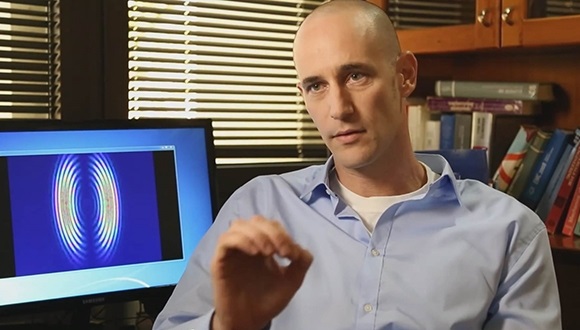March 19, 2015
Tel Aviv —In a world in which everyone and everything – from computers, tablets and smartphones to cars, homes and public transportation – are being connected, the technology required to support the exchange of such enormous quantities of data is a dire necessity. Scientists and engineers everywhere are intent on developing faster computing units capable of supporting much larger amounts of data transfer and data processing.
A new study published in Nature Photonics by Tel Aviv University researchers finds that new optical materials could serve as the nuts and bolts of future ultra high-speed optical computing units. According to the research, led by Dr. Tal Ellenbogen and conducted by group members Nadav Segal, Shay Keren-Zur and Netta Hendler, all of the Department of Physical Electronics atTAU’s School of Electrical Engineering and TAU’s Center for Nanoscience and Nanotechnology, these “nonlinear metamaterials,” which possess capabilities not found in nature, may be the building blocks allowing major companies like IBM and Intel to move from electronic computing to optical computing.
“Optical metamaterials have been studied for their intriguing and sometimes un-natural optical properties for the last 15 years,” said Dr. Ellenbogen. “This work shows that with the proper design, they can also be used to develop new types of optical switches, modulators and additional active optical components.”
At his lab at Tel Aviv University, Dr. Ellenbogen studies the interaction between light and matter at the nanoscale level in order to explore underlying physical mechanisms, which can be used to develop novel optical and electro-optical components.
“Future on-chip communications systems are expected to change from relying solely on electronics to relying on photonics or hybrid electronic-photonic systems,” said Dr. Ellenbogen. “These photonic on-chip communications systems will consist of active nonlinear nanoscale optical elements, and our research opens the door to consider nonlinear metamaterials as the active nanoscale components in future on-chip communications.”
All of the research was conducted at the Laboratory for Nanoscale Electro-Optics at TAU’s Center for Nanoscience and Nanotechnology, and was supported by the Israel Science Foundation, the European Commission Marie Curie Career Intergration Grant, and the Tel-Aviv University Center for Renewable Energy. For this research Nadav Segal won the The Feder Family Award for Best Student Work in Communications.
“By merging two disciplines in optics – metamaterials and nonlinear photonic crystals – we are opening the door to constructing novel active nonlinear devices based on metamaterials and to new fundamental studies altogether,” said Dr. Ellenbogen.
The researchers are currently exploring how to make the nonlinear interaction more efficient by using multilayered metamaterial structures and by examining different metamaterial building blocks.













